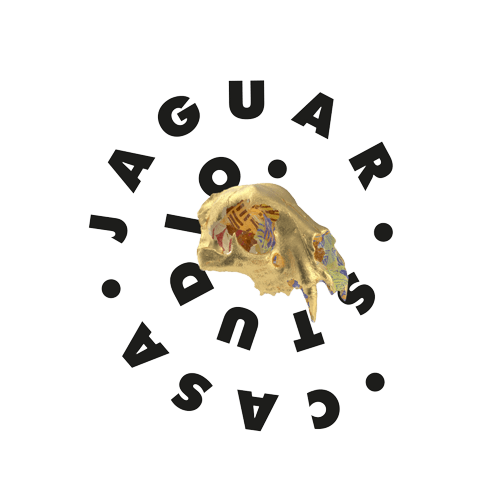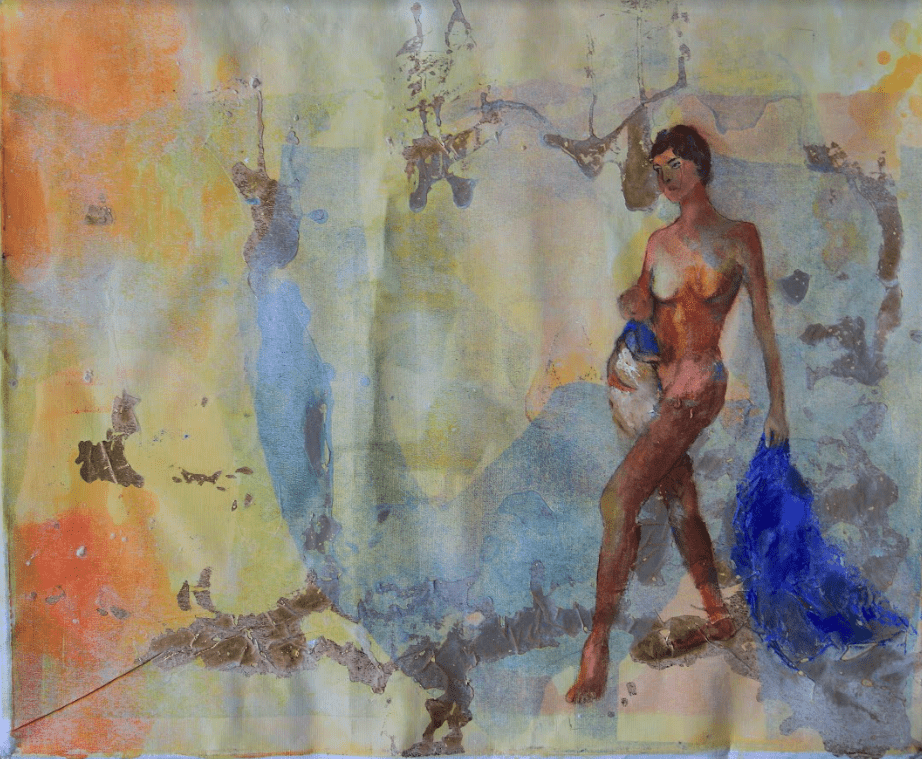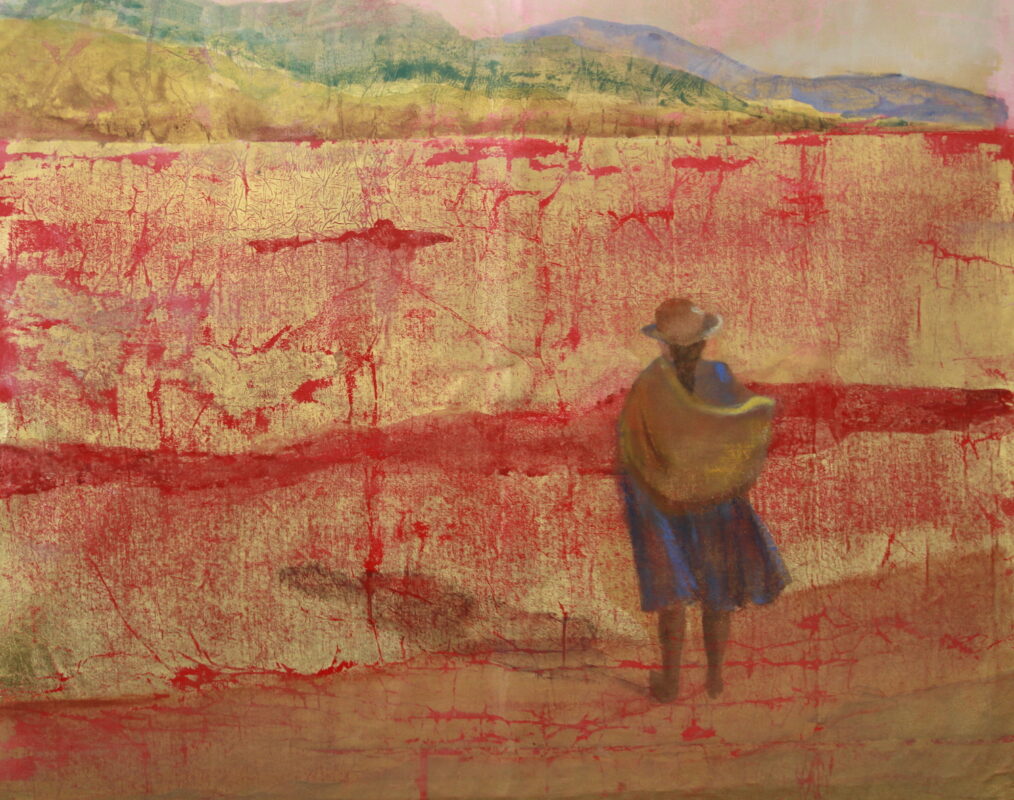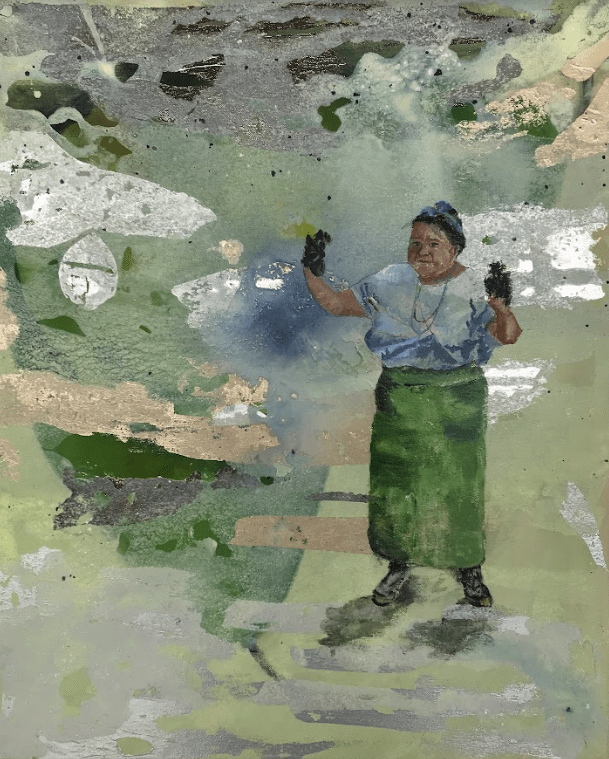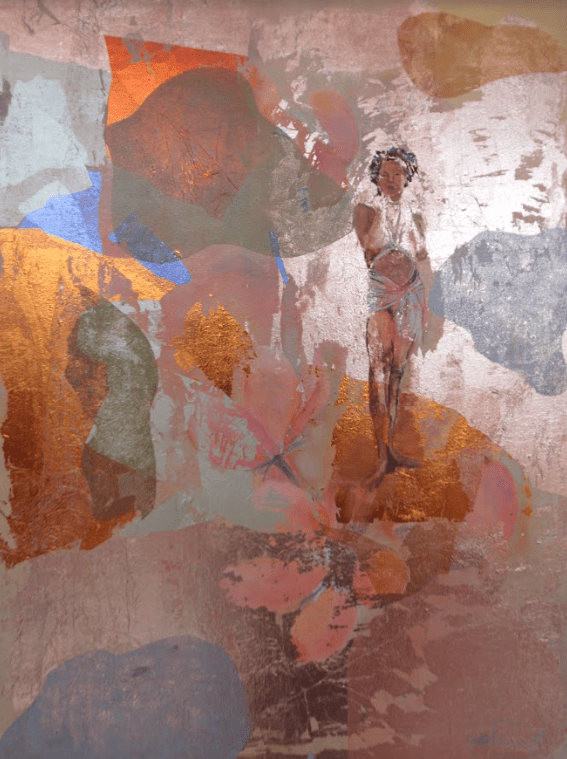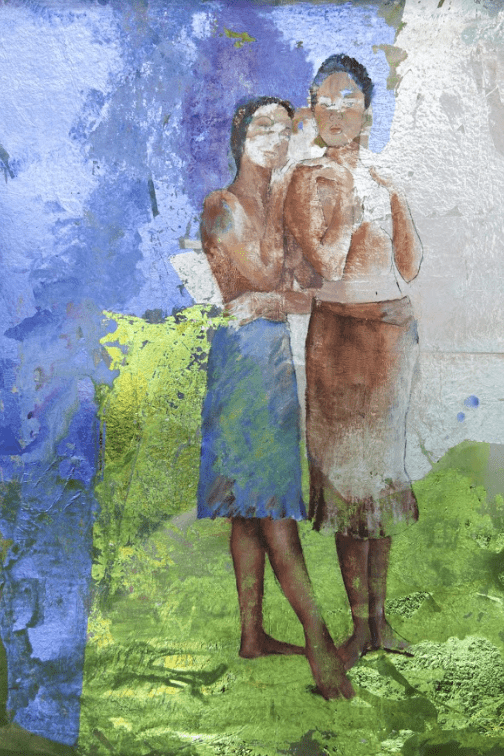Have you heard about La Gaitana?
Get to know the story of this woman who is an icon of indigenous peoples’ struggles and an important figure in Colombian history.
Who was La Gaitana?
La Gaitana, also known as Guaitipan (or Huatypan), was a chief of the Yalcón indigenous people in Timaná, Huila in the 16th century. She led her people in a resistance against Spanish colonizers that delayed their settlement in southern Colombia for decades. The vast majority of chronicles and texts that have portrayed Guaitipan reduce her story to the revenge she took for the assassination of her son at the hands of the conquistador Pedro de Añasco. Despite being an icon of the indigenous peoples’ struggles and of the Colombian imaginary, no one has written an accurate and complete biography of her.

What do the chroniclers agree on?
Named thus by the Spaniards, La Gaitana appears in the chroniclers’ accounts between 1510-1545 approximately. These different versions that mention La Gaitana coincide on certain points:
The invasion of Yalcón territory: the valley of the river of deep waters
In 1538, one of Sebastián de Belalcázar’s favorite captains, Pedro de Añasco, founded the town of Guacayo in the mountain valley of the river of the same name. Eventually the municipality took the name of Timaná, while the Guacayo River received the name of Río Grande de la Magdalena. Guaca-Hayo means River of the Tombs, or River of deep waters, according to chroniclers. At that time, Timaná was an obligatory passage between important territorial entities of the Spanish empire. Due to its strategic position that communicated Quito and Lima with Cartagena through the Magdalena River, Añasco founded this town and invaded the territory of the cacique Pigoanza, leader of the Yalcón people.
Buiponga’s death and Huatypan’s grief
With his growing power, Añasco demanded high tributes from the Yalcón people and daily presence as a tribute of his servitude. One day, the cacique Buiponga, tired of Añasco’s usurpation, did not show up for the tribute, in protest. Añasco went to look for him in person, captured him and took him with him to Timaná and burned him to death in the central plaza to sow terror, forcing his mother, Huatypan, to witness his death.
Huatypan takes on the task of allying different groups that were in conflict, such as the Paeces, Pirama and Guanaco, to form an army to expel the Spaniards. In the midst of her mourning, this woman managed to summon twelve thousand indigenous people who formed her troops. Among her allies was Pigoanza, whose son, called Pigambo, was an ally of the Spaniards and had a close friendship with Pedro de Añasco.
Huatypan’s vengeance and Pigambo’s betrayal
The Spaniards called him Don Rodrigo and the chroniclers insisted on his permanent closeness with de Añasco including their walking hand in hand and the tears shed by Pigambo every time the conquistador ignored his advice (Mächler Tobar, 2011). Don Rodrigo warned de Añasco about the revenge planned by la Gaitana in alliance with his father Pigoanza. In spite of this, Huatypan’s organization managed to overthrow the invader. The army commanded by Pigoanza defeated Añasco in the battle of Aquirgá and took him naked to la Gaitana. This is how Mächler Tobar narrates his death in La Gaitana: preludio a una biografía a la espera (2011):
Esta le saca los ojos con la punta de una flecha y se los presenta en una bandeja de oro; después le abre un hueco por debajo de la barba y de la lengua, y por allí pasa una cuerda, halando de la cual lo pasea de pueblo en pueblo hasta que él no puede caminar más. Luego le corta uno a uno diferentes miembros y lo hace morir desangrado. Se dice que el cadáver será devorado, la piel llenada de ceniza para decorar las entradas de las casas, y su cráneo, usado cual copa para beber chicha.
(She gouges out his eyes with the point of an arrow and presents them to him on a golden platter; then she opens a hole under his beard and tongue, and through it she passes a rope, pulling on which she walks him from town to town until he can no longer walk. Then he cuts off different limbs one by one and makes him bleed to death. It is said that the corpse will be devoured, the skin filled with ashes to decorate the entrances of the houses, and his skull, used as a cup to drink chicha. (My translation))
Between 1540 and 1541, the Spanish lost many battles to the Huatypan army and even considered leaving. Despite the indigenous victories, tens of thousands of lives were lost in this conflict resulting in dramatic demographic losses. After these years, nothing is heard of La Gaitana in the chroniclers’ accounts.
What happened to her?
Why do chroniclers don’t name her again after she takes revenge?
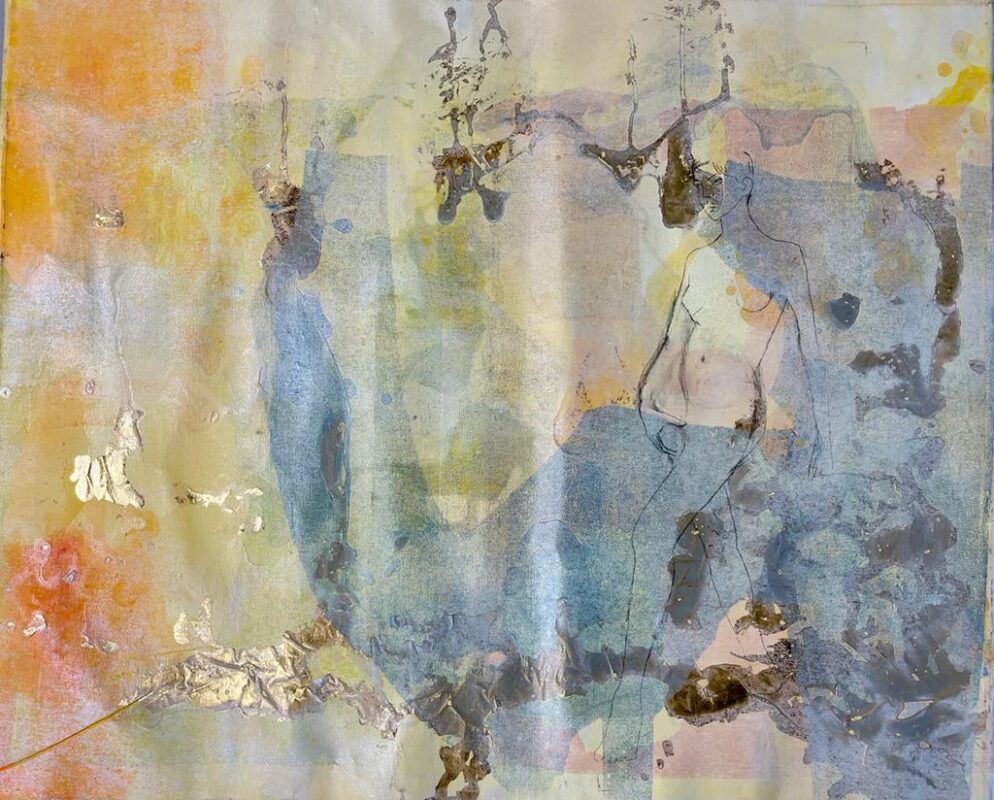
How did Spanish chroniclers portray Huatypan?
Between a diplomatic leader and a barbaric cruel woman
The first and most extensive text referring to La Gaitana was published by Juan de Castellanos in 1589 under the title Elegías de varones ilustres de Indias (Elegies of illustrious men of the Indies).This chronicler of the colony portrays her as a leader and diplomat, a strong and revered woman who was in all combat fronts. However, when evoking the vengeance exacted by her son, he presents a dehumanized character using language such as: “cruel barbarian”, “troubled, depulsed and yellow”, “coated with infernal furies”, “bad old haggard woman”, “lost by drinking Christian blood”. It seems important to me to compare the language with which he qualifies the vindictive act of La Gaitana with the homicidal act of Pedro de Añasco of which he only says:
En presencia de aquella que lo ama:
De fuscos humos rodeado vivo
Su vida consumió la viva llama. (889)
In the presence of she who loves him:
Of fuscous fumes surrounded alive
His life consumed by the living flame. (My translation)
Juan de Castellanos calls this indigenous woman savage for avenging her son, but does not punish the Spaniard who provoked this revenge by burning alive someone who did not want to pay homage to his oppressor. Like this chronicle, most of the portraits of La Gaitana have been written by men, who use a denigrating lexicon to refer to her in her “thirst for revenge”. Mächler Tobar asks the following question: “Is it men’s archaic fear of women that makes them present this story in this way?”
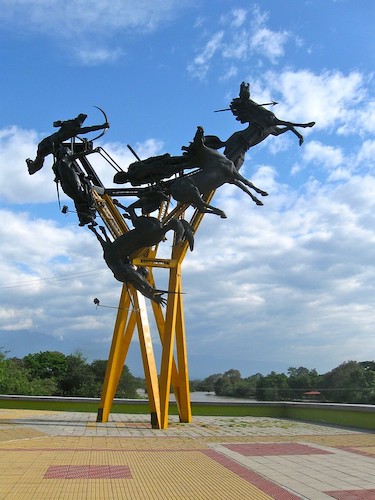
Without a real name and fogotten
The only rendition of the story of this woman that mentions her real name is the fictional radio script La Gaitana (1959) by Luis Hernando Vargas Villamil. By erasing her real name and choosing the one given by the Spaniards, colonial chroniclers and post-independence authors denied her identity and condemned her to oblivion. Why don’t they mention her again in their stories after she took revenge?She never forgot the fire that consumed her son, of whom only ashes remained-no body was left to mourn. She decided to take her revenge to forbid forgetting. Many chroniclers and authors have called her revenge barbaric. However, author Betty Osorio emphasizes that the action of gouging out Añasco’s eyes is best explained by taking into account that for certain ethnic groups this ritual prevents the dead from seeing and prevents them from returning to find their murderer (Osorio, 1997).
Savage
All the authors who have portrayed La Gaitana mention cannibalism as a consequence of the battles, pointing out this behavior as savage.
What if this was a firm and radical strategy of resistance?
The Colombian writer Rafael Gomez Picón (1981) explains the scorched earth policy used by the indigenous resistance; destroying everything that could be useful to the Spaniards to hinder their advance. Under this strategy, they refused to plant food, establishing a hunger strike. Once the stocks, animals and plants were finished, the natives, and sometimes the Spaniards, were forced to resort to anthropophagy. Mächler Tobar (2011) stresses that it is no coincidence that the peoples who put up fierce resistance to the Spanish advance are listed among the most cannibalistic, and that such a label guaranteed the possibility of making them slaves to whoever made war on them and defeated them.”
Beyond revenge: La Gaitana and indigenous resistance
Although little remembered, the indigenous resistance to the Spanish occupation in the southwest of what is now Colombia was long, permanent and violent (Mächler Tobar, 2011). Peoples such as the Yalcones, Pijaos, Inandos, Apiramas, Guanacas and Paeces fought among themselves and against the Spanish invasion. In this context, La Gaitana managed to unite the forces of these warring peoples in order to resist their common oppressor. Despite the feat of raising an army of thousands of indigenous people who would otherwise have fought each other, those who have portrayed La Gaitana have reduced her figure to that of a martyr mother by exaggerating her thirst for revenge, minimizing her role as a catalyst for opposition to outside aggression.
With her example, Gautipián, Huatypan, La Gaitana, propelled indigenous resistance and allowed it to last for many years. In addition, she allowed peoples like the Paeces to remain free. Today, in Colombia, her story has become a myth that forges identities, especially among the Paeces. Her vengeance fueled the desire to confront and oppose the Conquest among peoples who were undermining each other. Beyond being a mere vengeful woman who committed “barbarism”, La Gaitana is a symbol of resistance and freedom.
References
Castellanos, Juan de. (1997) [1589]. Elegías de varones ilustres de Indias. Bogotá, Gerardo Rivas Moreno.
Gómez Picón, Rafael. (1981) [1960]. Timaná. De Belalcázar a La Gaitana. Bogotá, Editorial ABC.
Mächler Tobar, E. (2011). La Gaitana: preludio a una biografía a la espera. América. Cahiers du CRICCAL, (40), 55-68.
Osorio, Betty. (1997) “La Gaitana: mito de autonomía y resistencia” en Betty Osorio y María Mercedes Jaramillo (editoras), Las desobedientes: mujeres de nuestra América. Bogotá, Panamericana, p. 25-44.
